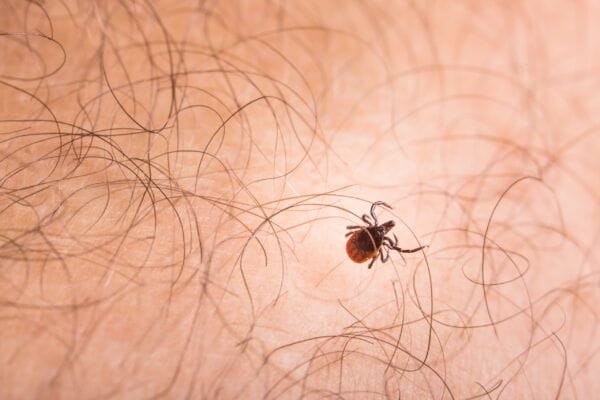Las enfermedades transmitidas por garrapatas, como la Lyme borreliosis, han aumentado considerablemente con el calor en los últimos años y, previsiblemente, podrían seguir acrecentándose. Así los aseguran diversos estudios científicos publicados recientemente. Muchas regiones principalmente de Europa y de América del Norte han sufrido esta incidencia, entre ellas, España. Este hecho supondrá todo un desafío para la salud pública en las próximas décadas.
Con el cambio climático, el doctor Mariano Bueno, director médico de Biosalud Day Hospital, alerta de que los casos de Lyme seguirán en aumento mientras suban las temperaturas y se extienda el período estacional de transmisión, es decir, el tiempo de interacción entre el ácaro y el humano.
Y es que, el cambio climático ha aumentado el riesgo de expandir la enfermedad de Lyme a nuevas áreas donde las garrapatas anteriormente no podían sobrevivir.
España, debido al progresivo aumento de las temperaturas, se ha convertido en un país muy propicio para el desarrollo de las garrapatas.
¿Cómo podemos protegernos?
Existen diversas maneras de protegernos ante esta amenaza. Entre otras, destacamos:
- Evitar las zonas de hierbas altas, arbustos o muchos árboles en entornos naturales.
- Vestir ropa de colores claros, donde se puedan advertir con facilidad la presencia de garrapatas; pantalones largos metidos por debajo de los calcetines, manga larga a ser posible y gorra.
- Evitar tocar animales de ganado o animales salvajes.
- Caminar preferiblemente por el centro de los senderos.
- Utilizar repelentes en caso de ser necesario.
- Revisarnos el cuerpo: fundamentalmente cabeza -pelo-, axilas, alrededor de la cintura, dentro del ombligo, dentro y alrededor de las orejas, detrás de las rodillas e ingles.
- Ducharnos inmediatamente y revisar la ropa para ver si tiene garrapatas.
En caso de encontrarnos con síntomas como con un sarpullido en forma de diana o blanco de tiro, fiebre, dolor de cabeza o fatiga, debemos buscar atención médica urgente. Los primeros síntomas de la enfermedad de Lyme normalmente aparecen a los 3 o 30 días después de la picadura de la garrapata. El tratamiento inmediato es importante, ya que, si no, la infección podría extenderse.
En la Clínica Biosalud Day Hospital desarrollamos protocolos personalizados para el tratamiento con éxito de la enfermedad de Lyme. Las pruebas que realizamos nos permiten conocer con exactitud el nivel de infección y el estado real de la inmunidad humoral y celular. Y, una vez realizado el diagnóstico, procedemos al tratamiento en cuatro fases.
Para saber más: https://biosalud.org/tratamientos-biomedicina/tratamiento-enfermedad-lyme/tratamiento/
Fuentes externas consultadas:
https://pubmed.ncbi.nlm.nih.gov/35585385/
https://www.nature.com/articles/s41558-022-01426-1
https://pubmed.ncbi.nlm.nih.gov/36809802/

